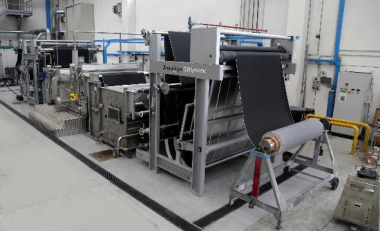Textil Santanderina launches black denim collection with Archroma’s sulfur dyestuff
Textil Santanderina, a manufacturer of quality fabrics with controlled traceability, launched its Advanced Black denim collection in collaboration with Archroma.
The Advanced Black collection by Textil Santanderina uses Archroma’s new DIRESUL® EVOLUTION BLACK LIQ dyestuff to produce on-trend authentic black denim apparel with sustainability and resource savings. In addition to allowing fashion and apparel brands to choose eco-friendlier alternatives that demonstrate their commitment to protecting people and planet, Textil Santanderina’s new Advanced Black denim range also offers unique shade and wash-down effects.
Based on synthesis technology developed by Archroma, DIRESUL EVOLUTION BLACK LIQ delivers an overall impact reduction to 57%*, measuring its effect on human health, ecosystems and resources compared to standard Sulfur Black 1 liquid. Unlike traditional synthesis processes, it does not produce any ammonia, sodium salts waste or liquid effluents, and water consumption in the synthesis process is reduced by 73% for massive savings. The new DIRESUL dyestuff, when adopted with the full Archroma coloration system, delivers a new black color with on-tone wash-down effect and cleaner effluent at the mill.
Textil Santanderina and Archroma previously collaborated to produce Textil Santanderina’s aniline-free** indigo denim collection with the use of DENISOL® PURE INDIGO.
*As determined by Ecoterrae, a leading Spain-based sustainability consulting firm, through a Life Cycle Analysis (UNE-EN ISO 14044:2006) at the synthesis stage, using the ReCiPe 2016 Impact calculation methodology.
**Below limits of detection according to industry standard test methods.
Archroma Textil Santanderina Denim dyes and specialty chemicals black dyestuff products Denim dyeing
Archroma







